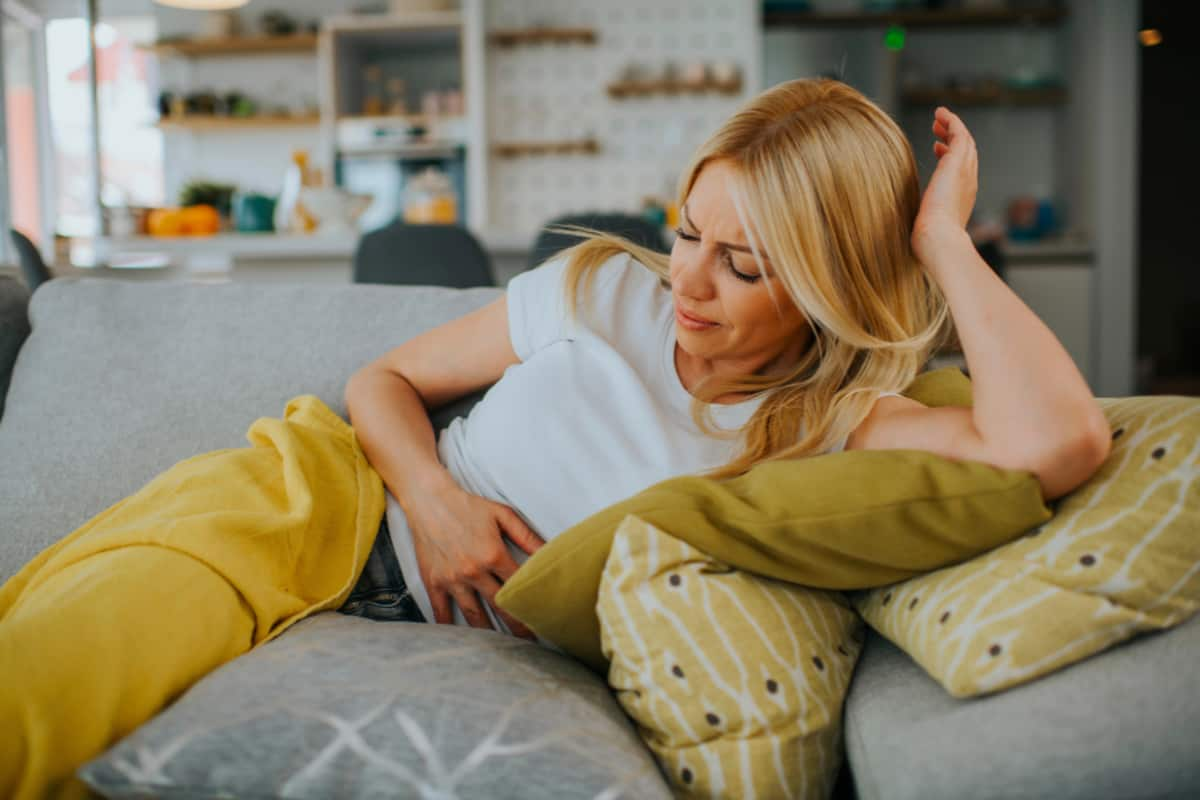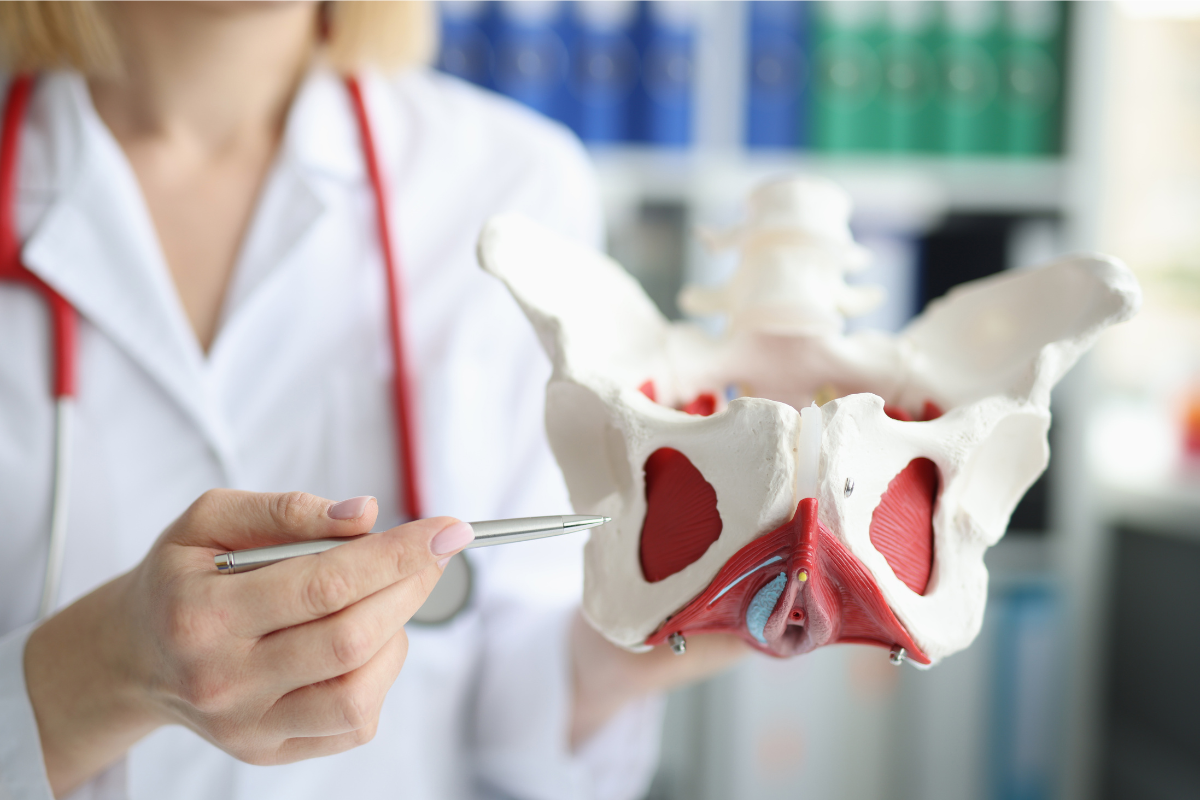Relieving Menopause-Related Constipation

Believe it or not, shifting hormones can affect your gastrointestinal system. Many premenopausal women notice the effect of changing hormones on digestion and stool quality during their menstrual cycle.
In general, the more dramatic changes in hormone levels around menopause seem to predispose women to constipation. The good news is that there are effective lifestyle-based strategies available to alleviate constipation regardless of your hormonal status.
Am I Constipated?
If you experience at least two of the following symptoms, you have constipation:
- Fewer than three bowel movements (BMs) per week
- Lumpy or hard stools
- Needing to strain for most BMs
- Needing to use your fingers to help get stool out
- Sensation of incomplete bowel emptying and/or blockage
Constipation can create abdominal discomfort, bloating, low energy or even weight gain.
How Menopause Contributes to Constipation
There is evidence that constipation can be directly caused by menopause and perimenopause. One study published in Menopause looked at 23 years of data from women in the menopausal transition. It concluded that the incidence and severity of constipation increased with age among the study’s participants. This same study found cortisol, a stress hormone affected by estrogen, to be a factor in the development of constipation in menopausal women. A second study noted that twice as many postmenopausal women had altered bowel function, including constipation, compared to premenopausal women.
Cortisol is a hormone released when the body is stressed. One of its many effects in the body is to slow digestion and movement in the colon—which creates constipation. Cortisol levels are balanced by estrogen, so cortisol levels increase as estrogen declines during menopause.
Progesterone is another reproductive hormone that decreases during menopause. A decline of progesterone can also contribute to constipation by causing stool to dry out in the colon. Drier stools are smaller and more difficult to pass.
Pelvic floor changes related to aging and hormonal changes can also contribute. The pelvic floor provides resistance that helps stool exit, so a weaker or thinner pelvic floor may not provide enough resistance. To read more about pelvic floor changes in menopause, check out this article.
The Influence of Medications
Many women take certain medications that can cause or intensify constipation. Common medications like blood pressure medications, iron supplements and pain relievers are linked to constipation. Talk to your healthcare provider about options that cause less constipation, if available. If there aren’t any good alternatives, it is even more important to use the strategies outlined below.
Keep Constipation at Bay With These Strategies
Keeping stools soft and regular starts with the basics—your lifestyle and diet. There’s no quick fix, but consistently following these guidelines will make a major difference.
Give your body a routine
Our body’s systems work best with routines, so the best way to avoid constipation is to keep a consistent schedule so your body knows it’s time to go. Most people tend to have a BM in the morning, but choose the time that matches your body’s natural rhythm. As much as possible, try to train your body that BMs happen around the same time every day.
Include the following elements in your routine to stimulate a BM:
- Eat at least a small meal. Our body demonstrates what is called a gastrocolic reflex, meaning that eating food stimulates a BM. Use this reflex to your advantage and eat a meal 20-30 minutes before you want to have a BM.
- Have a hot drink. Many people will tell you that a hot cup of coffee will stimulate their morning BM. Hot, caffeinated beverages are a powerful stimulant for a BM, but so is hot water with lemon, herbal tea or decaf coffee.
- Move. Moving your whole body can help stimulate more movement in your colon. It doesn’t have to be a whole workout, but stretches that move your abdomen, gentle yoga or a walk around the block can be helpful.
- Find some calm. When our nervous system is more in “fight or flight” mode than “rest and digest” mode, our body doesn’t want to have a BM. Many people find that a few minutes of calm—such as a short meditation or reading—will shift their body more towards the “rest and digest” mode that facilitates BMs.
Beyond a routine, the following lifestyle changes are the best way to set yourself up for success:
Hydration
Increasing your water intake is one of the most effective ways to reduce constipation. For health in general, including GI function, experts recommend drinking a minimum of 40 oz of water per day—ideally 90 oz or more.
Dietary fiber
Getting enough—and the right kind—of dietary fiber is key to keep stool soft and on the move.
Soluble fiber draws water into stool, acting as a natural stool softener. Foods rich in soluble fiber include:
- Oats
- Peas
- Beans
- Apples
- Citrus
- Carrots
- Barley
- Psyllium husk
Insoluble fiber bulks stool and keeps intestinal contents moving at a good pace through your system. Foods rich in insoluble fiber include:
- Wheat bran
- Nuts
- Beans
- Cauliflower
- Green beans
- Potatoes
Women over 50 should aim for 20-25g of fiber intake per day
If you decide to increase your fiber intake, start slow and gradually increase to avoid bloating. If you’re getting sufficient fiber and still having constipation, don’t keep adding more. Adjust the ratio of soluble to insoluble fiber to see if that helps.
It is possible to eat too much fiber and actually cause more constipation, so if eating the optimal amount of fiber is not helping, move on to other changes or talk to your healthcare provider about other ways to resolve your constipation.
Exercise
Like they do for every other body system, exercise and movement in general is an important step in preventing constipation. More movement prompts more movement!
Sleep
Sleep helps your body achieve and maintain daily rhythms. It also allows your body to recover from your day and avoid a state of chronic stress. More time in “rest and digest” mode means that it’s easier for your body to move contents through the GI system.
Good technique
Most of us were never taught the proper way to have a BM. People with constipation will frequently hold their breath, strain and use other unhelpful strategies.
Good technique for BMs includes:
- A comfortable position. Many people feel most relaxed when their knees are higher than their hips. Products like the Squatty Potty allow you to place your feet on a stool around the bottom of the toilet to bring your knees closer to your chest.
- Breathing. Holding your breath when bearing down will actually trigger your pelvic floor muscles to contract instead of bulge and lengthen. Exhaling while you bear down will cue your body to let those muscles go and yield to the pressure. Blowing through your closed fist can help you learn how to coordinate this type of breathing.
- A soft belly. If your abs are sore after a BM, you’re working far too hard. Your lower belly should soften and slightly bulge out while you’re bearing down.
Tying It All Together
If you’re struggling with constipation, these strategies can be life-changing. However, if you’re still struggling after making these changes consistently and giving your body at least a few weeks to adjust, check with your healthcare provider. You may benefit from more support, including a referral to pelvic physical therapy.
Sign up for more unique women’s health content
By submitting this form, you agree to the Lisa Health Privacy Policy and Terms of Use


